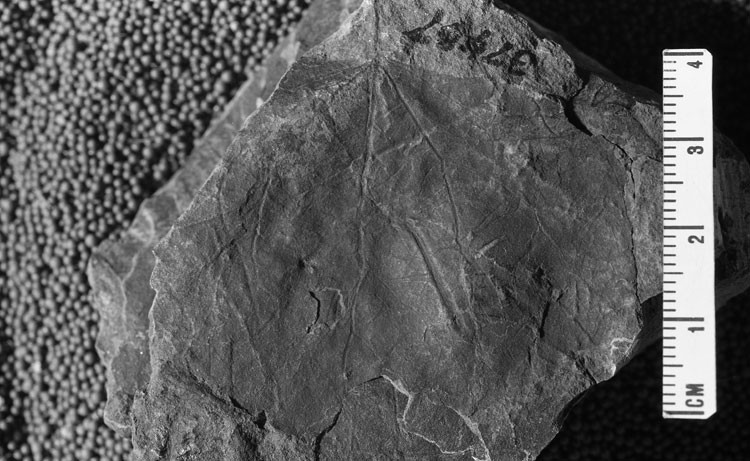Locality
From Hollick (1930) (p. 63-64)
"Chignik River, just below Long Bay, Alaska Peninsula (original No. 55); collected oy W. W. Atwood and H. M. Eakin in 1908 (lot 5297)."
Description
From Hollick (1930) (p. 63-64)
"Leaf petiolate, ovate-elliptical, broadest in lateral dimension, 4.5 centimeters in length, exclusive of the petiole, by 6 centimeters in width across the middle, slightly curved to the apex, rounded to the truncate base; margin crenulate-dentate above, entire below; nervation tripalmate, campto-craspedodrome; lateral primaries basilar, ascending, flexed or angled, with forking branches extending outward from the angles, the branches forked and connected by cross nervation, forming irregular loops near the margin with short, ultimate nervilles that extend from the loops and terminate in the crenulations; secondary nerves weak, four on each side, irregularly spaced and arranged, subtending obtuse angles with the midrib, merging into the tertiary nervation and forming a network of polygonal areolae with fine, short nervilles on the outer borders that extend to and terminate in the adjacent marginal crenulations."
Remarks
From Hollick (1930) (p. 63-64)
"This species belongs, biologically, in the same group as Populus glandulifera Heer (1856) (p. 17, pl. 58, figs. 5 - 11) in part, and Populus hookeri Heer (1868) (p. 137, pl. 21, figs. 16, 16b) both of which, however, are Tertiary species. Four diverse forms, from the Fort Union formation of Montana, referred to P. glandulifera, are depicted by Ward (1886) (p. 550, pl. 33, figs. 1 - 4) one of which (fig. 1) has tripalmate nervation like ours but a different outline, while another (fig. 2) is almost identicnl in outline with ours but has quinquepalmate nervation."
The Cretaceous species to which our specimen appears to be most closely related is Populus elliptica Newberry (1868; 1898) (p. 16; p. 43, pl. 3, figs. 1, 2) from the Dakota sandstone of Nebraska; but our species is broader and has a truncate instead of a more or less cuneate base."
